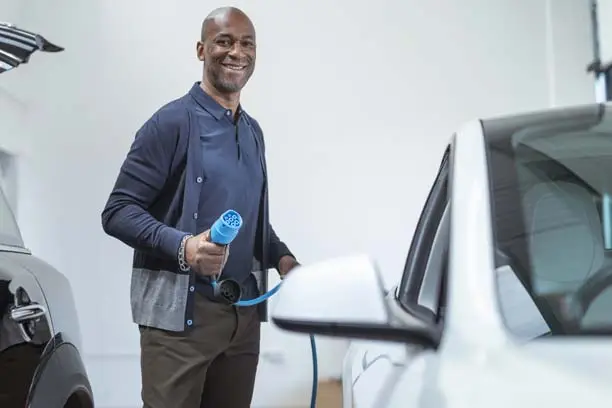How to Prepare Your Garage for an Electric Vehicle


The number of electric vehicles (EVs) on U.S. roads continues to climb annually. For example, the percentage of electric car sales out of total car sales doubled from 2020 to 2021. Thanks to more options, better battery life and fuel costs, increasingly more EVs are bound to sell.
But for many Americans, the switch to electric vehicles can seem daunting, especially charging your EV at home. Is it safe to charge an electric car in my garage? Do I have the space? How much does it cost? Follow these three steps to set up your garage charging station, also known as electric vehicle supply equipment (ESVE).
Electric cars come with a 120-volt, or Level 1, charger. This is also your standard home plug, so no, you don’t need a special outlet for an electric car, as long as your garage has an open outlet. The downside: Level 1 charging is slow — 120v outlets charge at a rate of two to five miles per hour, according to the U.S. Department of Transportation.
On the other hand, Level 2 chargers offer between 10 to 20 miles per charging hour. These ESVE charging stations — what probably comes to mind when you think of an EV plug — are generally 240-volt outlets. The quicker charge comes at a cost though – higher electricity rates.
If you want a Level 2 charger, you’ll need to bring in a professional electrician. They’ll determine if you have the power required for an electric car; you might need to upgrade to a higher amp panel or add more space to your circuit breaker panel. Be sure to ask if their installation costs cover permits (if necessary in your state). Level 2 chargers — and the installation — can cost over $1,000, but you might be eligible for incentives and rebates with the upgrade.
Your electrician is here to help with this one, but here are a few considerations to keep in mind when choosing the best location for an EV charger in your garage.
Smart Car, Smarter Coverage
You did the homework on your new electric vehicle — leave the insurance to us. Contact your local Farm Bureau agent today to guarantee your auto coverage is just as efficient.